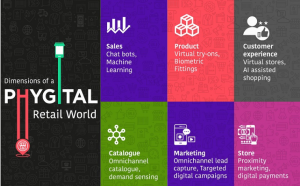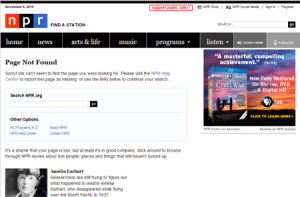Lead nurturing must be a part of your comprehensive sales and marketing strategy. In its core, lead nurturing is about building relationships with prospects through different channels, even when they’re not near the decision stage yet.
B2B customers often take the long and winding road, so to speak. Potential buyers in the B2B space don’t become customers in a snap. They need to be marketed to constantly and over time. They need space to absorb information and educate themselves. Most importantly, they need to build trust with potential vendors.
This is where lead nurturing comes in. It’s the component of a sales and marketing strategy where you keep constant communication with your prospect through different channels and throughout their journey in the sales process. During the times when the prospect isn’t in direct contact with a marketer or a sales rep, lead nurturing works its magic.
Here are some lead nurturing principles you must take to heart.
Understand your audience
In order to communicate effectively, you need to identify your audience. It’s crucial that all content for lead nurturing is created with your audience in mind.
This starts with your buyer personas.
As per Hubspot, buyer personas are,
“…a semi-fictional representation of your ideal customer based on market research and real data about your existing customers. When creating your buyer persona(s), consider including customer demographics, behavior patterns, motivations, and goals.”
Creating these personas for your organization will help both sales and marketing tailor all their communications effectively. It is one thing for the content to reach your audience and another for the content to effectively resonate with them.
Make sure you capture as much first-hand information as you can from leads and prospects. Tools that integration your CRM and phone system like the Salesforce Asterisk CTI help you keep all call data without reps having to fumble with manual note-taking.
Proceed only with permission
Sending emails is easy. Sending mail to people who are willing to open them is tough.
In marketing, permission is king.
The moment you miss to ask permission or lose the permission of your prospect, you’ve already lost their interest. They become disengaged. Your emails? Unsubbed. Marked as spam.
You must be well-versed in permission marketing.
Seth Godin explains it succinctly.
“Permission marketing is the privilege (not the right) of delivering anticipated, personal and relevant messages to people who actually want to get them.
It recognizes the new power of the best consumers to ignore marketing. It realizes that treating people with respect is the best way to earn their attention.”
Score leads
Lead scoring is the method of assigning a numeric value to prospects in order to grade them according to priority. This score will be based on a number of factors including lead quality and sales readiness.
Each organization needs to create their own unique scoring criteria and methodology. Creating that will require coordination between sales and marketing. It involves identifying your buyer persona and ideal customer, the activities and behavior that signal interest, and other criteria that would characterize a lead as sales-ready.
Maintain communication between sales and marketing
Many lead nurturing plans fail because marketing and sales can’t get it together. This lack of coordination and mutual understanding between two departments is a tale as old as the abacus.
It’s a must for marketing to coordinate with a sales reps to ensure that the timing is right: When a lead is qualified, it must be passed. Same goes for the content that a lead has been exposed to. Both sales and marketing have to know what contact the prospect has already had. A comprehensive tech stack that includes something that allows reps to record all customer interaction will help tremendously. If you use Salesforce and Asterisk, integrate them with a CTI that has a call logging feature.
This is important in determining the next steps.
This understanding isn’t only for better lead nurturing. The result of a harmonious sales and marketing relationship is a steady influx of high-quality leads.
Think beyond the inbox
Does your lead nurturing efforts purely revolve around emails? If so, you are missing out on many opportunities to reach prospects.
All marketing channels are possible venues for lead nurturing. You need to be present where the prospects are, ready to provider meaningful conversation and value at every step of the way, in any time.
Aside from email, use a combination of different content types like white papers, ebooks, social media posts, toolkits, checklists, and other creative content forms to nurture your prospects through the sales cycle.
Be sensitive of buying cues
Watching out for buying cues is a challenge now that almost everything happens online, not even over the phone. Keep track of their digital body language so you can get a feel of where they are in the decision-making process. What have they downloaded? Did they register for something? Use all this info in your lead scoring so you could identify at what point they become sales ready.
Understand the multi-touch nature of B2B marketing and sales
Successful lead nurturing campaigns deliver content that’s both timely and appropriate for the situation. Content must take your prospect further into the buyer’s journey by answering their questions and addressing their doubts.
It takes multiple touches to turn a prospect into a sales-ready lead. According to research from Aberdeen entitled the Marketing Lead Management Report, it takes ten marketing touches to bring a lead from the top of the funnel up until they are closed-won.
Take your prospect relationships to another level by following these tips!
Business & Finance Articles on Business 2 Community(101)









